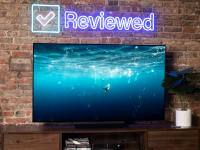Here’s why you can stop worrying about OLED burn-in
Most OLEDs have built-in measures to prevent burn-in
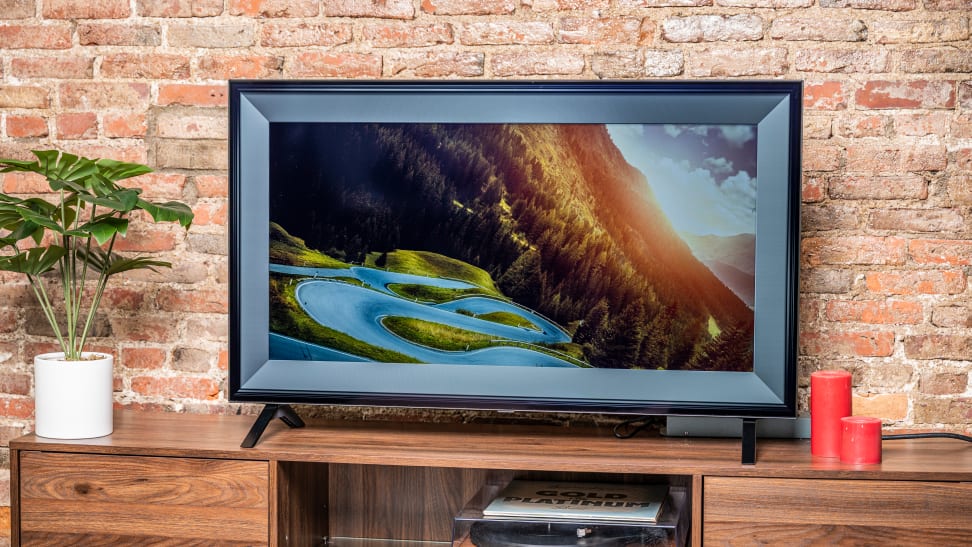 Credit:
Reviewed / Betsey Goldwasser
Credit:
Reviewed / Betsey Goldwasser
Products are chosen independently by our editors. Purchases made through our links may earn us a commission.
With their perfect black levels, incredible color, and ultra-thin panels, it’s hard not to fall in love with OLED TVs. And yet, despite the fact that they frequently top our lists of the best TVs, many people are hesitant to warm up to OLED TVs on account of their perceived propensity for a longevity problem called burn-in.
The concerns are not unfounded, and in fact, totally understandable. Early OLED TVs did have trouble with this phenomenon, throwing the technology into question. But these days, just about every OLED TV on the market is equipped with preventative measures to curb burn-in. Unless you’re a very particular type of television viewer, you needn’t worry about it at all.
What is OLED burn-in?
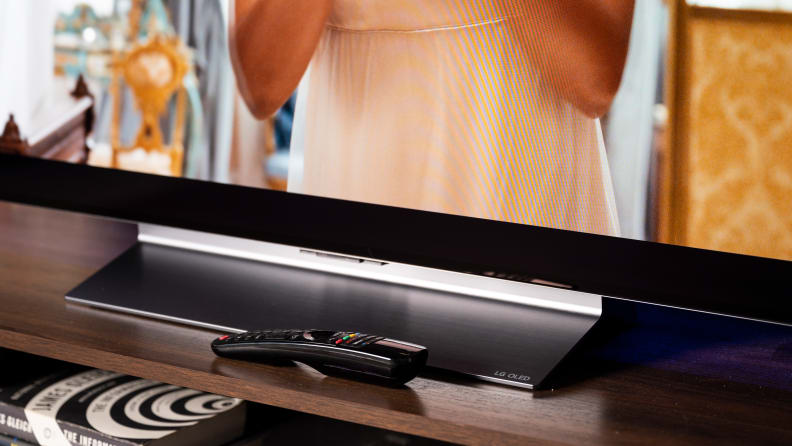
Burn-in has been a common concern among prospective OLED TV buyers for years.
Image retention (commonly referred to as burn-in) is a display issue that manifests as a ghostly afterimage left on the screen following heavy use. The term “image retention” often describes a short-lived effect, while the term “burn-in” generally refers to a long-term (and sometimes permanent) one. If you’ve ever seen an old TV at an airport or a bar with an outline of the CNN logo or a sports ticker permanently watermarked onto the picture, you’ve seen burn-in first hand.
The prospect of burn-in has maligned the reputation of OLED TVs for nearly a decade. Burn-in is nothing new, however; it goes back to the days of CRT TVs. Unfortunately (though understandably, given the premium status of OLED technology), the phenomenon has glommed onto the otherwise glowing reputation of OLED TVs, like a nasty open secret. Similar concerns swirled around plasma TVs, too, playing a significant role in that technology’s ultimate demise.
To understand how concerned you should be about the prospect of burn-in, it’s important to first understand what causes it.
What causes OLED burn-in?
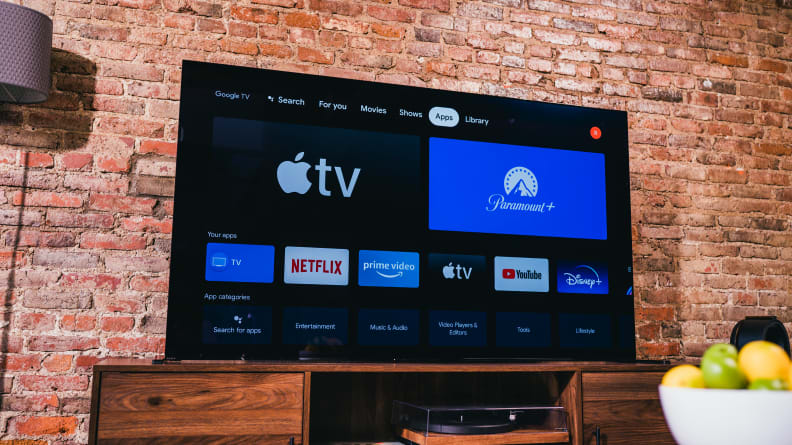
Burn-in is the result of static images being left on a display for long periods of time.
Burn-in is the result of a static image being left on a display for a prolonged period of time. Channel logos, news chyrons, Blu-ray menu options, and anything else that remains fixed on a display for an extended period of time can cause burn-in.
Critically, though, these potentially problematic picture elements really need to hang out on the display for an abnormally long period of time before causing any problems to modern TVs.
Do I need to worry about OLED burn-in?
Contrary to what you might’ve heard, burn-in is not a myth; there’s a reason TV manufacturers equip OLEDs with various preventative measures for burn-in. However, it’s not a serious concern if you watch TV under what most of us would consider normal conditions.
An airport TV might be marred by a permanent, phantom CNN logo, but it’s only dealing with that problem because that particular TV is tuned to CNN for several consecutive hours per day—far longer than most of our TVs at home. Even if the majority of your days are spent watching TV, you’d have to watch a lot of hours’ worth of static imagery for your OLED TV to be at risk.
If you use your OLED TV in this manner, or if you use it as a monitor, you are at higher risk of burn-in than the average consumer. We recommend turning your TV off periodically in order to give its pixels a rest.
If you’ve taken stock of your viewing habits and you’re still concerned about buying an OLED TV, you can take solace in the fact that almost every major TV brand equips their OLED TVs with software measures designed to mitigate the risk of burn-in.
OLED burn-in preventative measures by brand
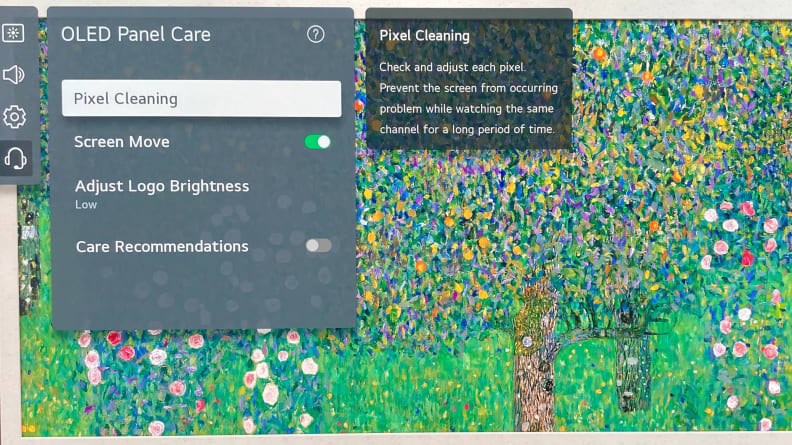
LG, Samsung, and Sony OLED TVs are equipped with software-based measures to prevent burn-in.
You’d be hard pressed to find an OLED TV on the shelves today that hasn’t been engineered to prevent burn-in and preserve longevity. Here’s how some of the most popular OLED TV manufacturers aim to protect your investment.
LG OLED TVs
LG OLED TVs—like the C3, our current pick for the best TV you can buy—come with a variety of image retention prevention measures fitted right into their software. Some are background processes while others are manual.
First, LG OLEDs have the ability to detect static, on-screen logos and adjust their luminance to prevent image retention. They also offer something called Pixel Refresher, which runs automatically when the TV is turned off after four hours of cumulative use. Pixel Refresher compensates for pixel deterioration by scanning and refreshing the TV’s pixels. It can also be operated manually in the event that you detect burn-in. Pixel Refresher isn’t solely a burn-in prevention tool, but it goes a long way toward ensuring the longevity of your OLED.
Rounding out LG’s OLED preservation toolbox is Screen Shift, which subtly moves the picture over time. You can read more about LG’s commitment to image retention prevention on LG’s official website.
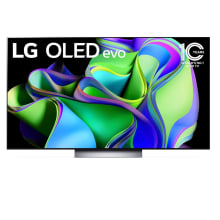
With an incredible picture and full set of features, the LG C3 is the best TV for most people.
Samsung OLED TVs
Samsung made its grand return to the competitive world of OLED TVs with some of the first QD-OLED TVs, which add a layer of quantum dots for enhanced color and luminance. The S95C is the brand's flagship QD-OLED, while the S90C is one of the most affordable QD-OLED TVs you can buy.
Naturally, these TVs are equipped with a set of features similar to LG OLEDs. Adjust Logo Brightness will automatically dim on-screen logos upon detection and Pixel Shift will move the picture after an extended period of time (much like LG’s Screen Shift). Samsung also offers its own version of Pixel Refresher, which can either be initiated manually or set to run automatically while the TV is off.
All of these options can be found in the Panel Care settings menu. To read more about Pixel Refresher, head over to Samsung’s official website.
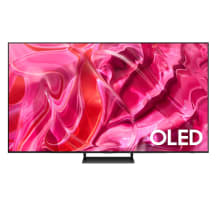
The Samsung S90C is one of the most affordable ways to experience QD-OLED.
Sony OLED TVs
Sony OLED TVs (like the jaw-dropping A95L) offer a set of on-board tools to prevent image retention, too. Its version of Pixel Refresher is called Panel Refresh, and like its LG and Samsung counterparts, Panel Refresh will either run automatically when the TV is turned off following prolonged use, or operated manually whenever the user sees fit.
Sony also offers a Pixel Shift function which moves the picture subtly to prevent image retention. Check out Sony’s website for more information on these functions.
A word about pixel refresh
As outlined above, LG, Samsung, and Sony all offer their own pixel refresh maintenance cycles. Depending on how they’re accessed and how long the TV has been in use, the process might cause one or more vertical or horizontal lines to appear on your OLED TV while the rest of the panel is off. Don’t panic—it’s a normal part of the pixel refresh cycle.


